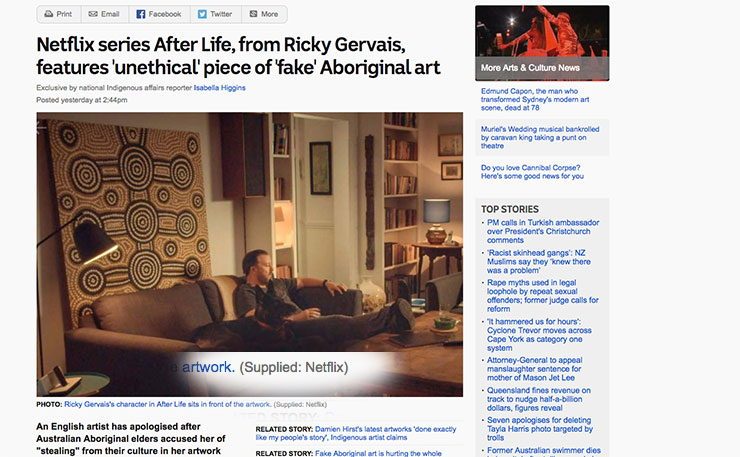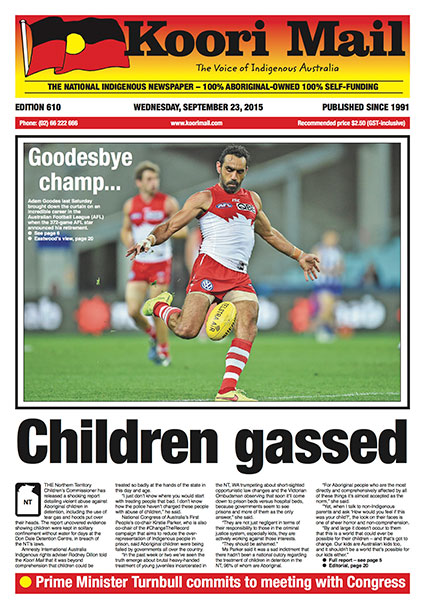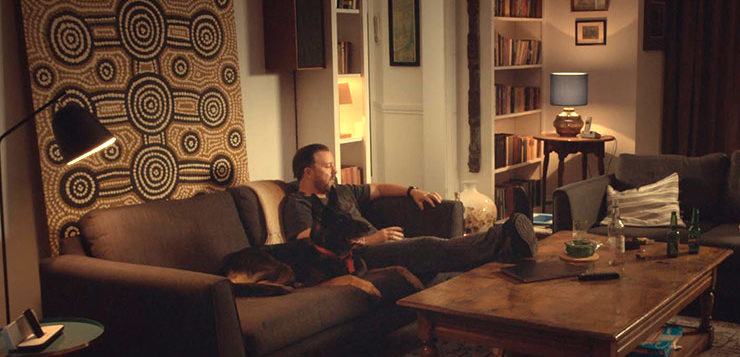That’s not an exclusive. THIS Is an exclusive. Actually it’s not an exclusive, it’s a yarn crafted from other people’s work on social media… but in the spirit of the ABC standard for reporting, I’m claiming it as an exclusive. Chris Graham explains.
Overnight, the Facebook and the Twittersphere fired up over an ABC online story posted late yesterday which claims to be an exclusive… and which very much isn’t.
Under the headline, ‘Netflix series After Life, from Ricky Gervais, features ‘unethical’ piece of ‘fake’ Aboriginal art’, ABC national Indigenous affairs reporter Isabella Higgins writes:
“An English artist has apologised after Australian Aboriginal elders accused her of “stealing” from their culture in her artwork featured in Ricky Gervais’s wildly popular new Netflix series.
“Gervais’s character’s living room is seen frequently throughout the program and features a large dot-painting resembling art produced in remote Aboriginal communities in central Australia.
“Commenting on social media, fans were excited to track down the Indigenous artist whose work had hit the big time, but that quickly turned to disappointment.
“It emerged the work was done by a female English painter who instead replicated the style of Aboriginal art.”
It did, indeed, emerge that the work was done by a female English painter… but the ‘fan’ who was ‘excited’ to track down the artist was one of the nation’s most prominent Aboriginal Journalists, Danny Teece Johnson, who works for NITV.
After watching Gervais’ Netflix series, Johnson put a call out on social media trying to identify the artist. This is the tweet from Johnson that started it all.
And this is the tweet in reply from writer Jerico Mandybur that exposed the fraud.
The story blew up, NITV and SBS covered it, Johnson talked about it on his radio show… and then the ABC came in almost a week later and tried to claim it as their own.
Obviously, the only new content in the ABC is an apology from the British artist. That’s not an exclusive – in media circles it’s known as a ‘follow’. It’s roughly equivalent to a journalist claiming that a politician’s response to a scandal broken by another journalist was also an ‘exclusive’.
But it gets worse. ABC has listed the lead picture in the article as ‘SUPPLIED: Netflix”, which is false. The picture comes from Danny Teece Johnson – he took a screenshot of the Netflix show while he was watching it on his phone. The ABC has simply stolen it from Johnson’s Twitter account, and then pretended it was supplied by Netflix.
All the ABC has done is lighten the picture stolen from Johnson, and then lie about it.

ABC’s Indigenous twitter channel this morning has promised to ‘get some answers’.
Unfortunately, it’s far from the first time the ABC has claimed exclusivity over stories that were reported long before by others, particularly in Aboriginal affairs (this writer has been ripped off numerous times by ABC and other mainstream journalists, although the Daily Mail is considered by the industry to be the ‘arch offender’).
The most infamous ABC incident was in 2016, when ABC’s 7:30 report claimed an ‘exclusive’ over the abuse perpetrated in the Don Dale youth detention centre in Darwin.
The reporting, on the upside, led to a Royal Commission into the conduct of government and guards, but the story had already been widely reported by Koori Mail, an Aboriginal publication based in Lismore 10 months earlier.

The ABC entered the story into the multiple categories in the Walkley Awards, and it was listed as a finalist in two – the Television/Audio-Visual Weekly Current Affairs category, and Investigative Journalism.
On any other day, a story that sparked a Royal Commission might be a shoe-in – the story won neither category.
We’ll keep you posted when – or rather if – the ABC removes the ‘exclusive’ tag. We’ll also bring a response from Ms Higgins if she replies to a series of emails sent to her this morning.
UPDATE: The following was provided by an ABC spokesperson:
“The ABC’s National Indigenous Affairs correspondent saw a lot of social media speculation about the painting used in Netflix series “After Life” on Thursday last week and has been working on the story since then. The ABC made the decision not to publish until we could tell the full story behind the painting. The “exclusive” tag refers to the extensive original reporting in the final story: the statement provided to the ABC by the UK artist involved, including the news of her apology and that she has decided to remove the painting from her catalogue, and the interviews with the representatives of Papunya Tjupi. The story refers to the “fans” plural who were talking about the painting on multiple social media platforms; it is not a reference to any one person. The “Supplied: Netflix” tag referred to the fact that the image is of a Netflix program; it will be amended to clarify.”
DON’T MISS ANYTHING! ONE CLICK TO GET NEW MATILDA DELIVERED DIRECT TO YOUR INBOX, FREE!
Donate To New Matilda
New Matilda is a small, independent media outlet. We survive through reader contributions, and never losing a lawsuit. If you got something from this article, giving something back helps us to continue speaking truth to power. Every little bit counts.




